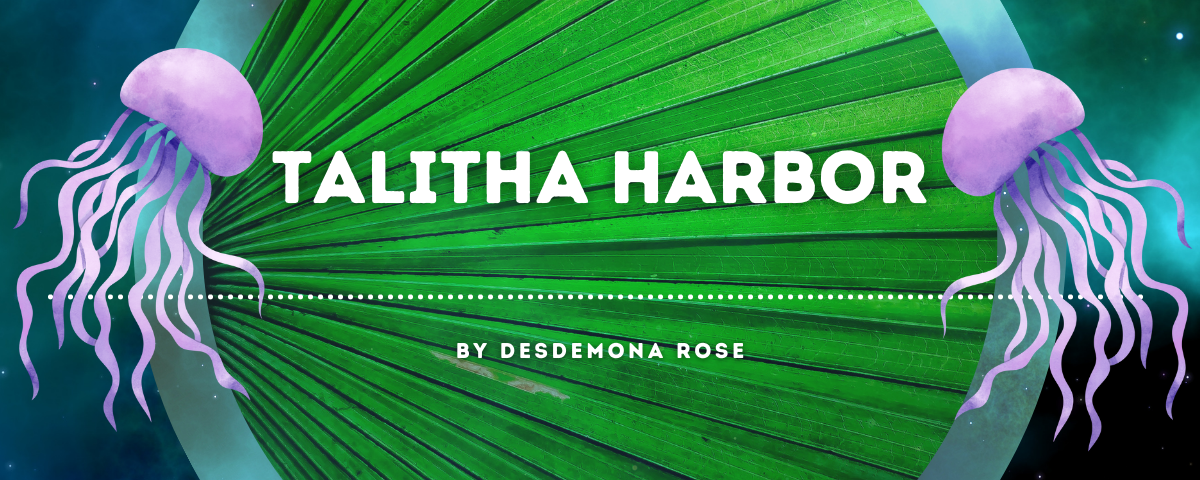Sending Thoughts in Smoke and Ash
Talithan culture is mostly secular. They are descendents of people who escaped a dying planet with science. However, that hasn’t removed all spiritual needs. While there are people who are happy being perfectly grounded in a reality defined by hard science. There are others who seek comfort in other ways.
There are no organized religions, but some spiritual practices have gained acceptance. The theme of their spiritualism can go in any direction. Mostly, they turn their attention to universal mysteries and planetary strength. The phrase, “I hope the universe turns in your favor,” is common across all of Talitha Harbor. A phrase that generally means, ‘good luck,’ or, ‘I hope things go well.’
There are practices geared towards giving back to the planet. All of their dead are fertilized, most going to The Grove of Lost Souls.
There are smaller rituals or practices, giving back to gain favor or to apologize. One ritual is to, “send thoughts.” Or, in a more detailed phrase, “sending thoughts in smoke and ash.”
History
Almost one thousand sols ago the Founders landed on the Great Island of Anunitum. Ancient forests covered most of the large island, teeming with a dense population of arthropods. It didn’t take long to learn some were dangerous. They carefully cleared land and slowly pushed back the native wildlife. One effective way of doing so was with fire. As they expanded the city, they left the original fire pillars and built more. These were also used for light and warmth while the city was still in its early stages.
Each city has its own unique style of fire pillar.
Anunitum, the first city, has large round dark gray stone columns or tables. They are a little over a meter tall and equally wide. The stone is from the extinct volcano that the City of Anunitum Fortress rests in.
Simmah, the second, also has round one meter tall and wide columns. When they built this city, they no longer needed fire to drive back dangerous arthropods. However, the columns had become a part of the Talithan culture and they built them as part of city planning. The columns are made with the same clay bricks as the Simmah fortress. The column also features a mixed quartzite stone rim for decoration, which also points back to the fortress’ quartzite stone floor.
Pangu, the third city. When Pangu was constructed, the architects involved wanted something unique and a little more colorful than the former two cities. This was true for their fire columns. Instead of uniform and matching columns, they built unique pillars to match the neighborhood they were in. Pangu has thirteen small districts. Each a color of one of the Thirteen Vocations. The pillars are made of clay and painted to match the district they’re in.
Anunitum, the first city, has large round dark gray stone columns or tables. They are a little over a meter tall and equally wide. The stone is from the extinct volcano that the City of Anunitum Fortress rests in.
{Picture Coming Soon}
Simmah, the second, also has round one meter tall and wide columns. When they built this city, they no longer needed fire to drive back dangerous arthropods. However, the columns had become a part of the Talithan culture and they built them as part of city planning. The columns are made with the same clay bricks as the Simmah fortress. The column also features a mixed quartzite stone rim for decoration, which also points back to the fortress’ quartzite stone floor.
{Picture Coming Soon}
Pangu, the third city. When Pangu was constructed, the architects involved wanted something unique and a little more colorful than the former two cities. This was true for their fire columns. Instead of uniform and matching columns, they built unique pillars to match the neighborhood they were in. Pangu has thirteen small districts. Each a color of one of the Thirteen Vocations. The pillars are made of clay and painted to match the district they’re in.
{Picture Coming Soon}
Observance
The ritual itself is simple and will vary widely with participants. The participant brings an object that can be burnt safely, wood, paper, fabrics, or other natural items. They place it in the pit and light the item on fire. Matches are the most commonly used method and some artisans will sell sol matches for this purpose.
Kustom matches may be made with scented wood, be slightly larger, or have designs etched or painted on the stick. Ouroboros Vocation will also give matchsticks for free. These will be simple and vocation made.
The objects burned may be something personal, or items pulled from the various craft material recycle boxes placed around the city. As the person watches the items burn, they send their thoughts. Some do so quietly, others voice them out loud. Ouroboros has private rooms, with chimneys, that can be used if someone wants to speak out-loud, but not have everyone around them hear it.
It’s a tradition to stay until the object is completely burnt. They keep their thoughts, wishes, memories, etc active in their mind until then. When they only have ash, they can leave it in the pit, or collect it. Some will burn their offering on small clay plates for easier collection and so their ashes won’t mix with others. What the person does with the ashes after will depend on the purpose behind their visit.
Excerpt from Sacred Ecology (WIP)
Symbol for Ouroboros Vocation
(WIP)






This is a beautiful tradition, and it feels super believable for a secular, science-heavy world! The notes at the bottom really livened up the reading experience too <3
Thank you!